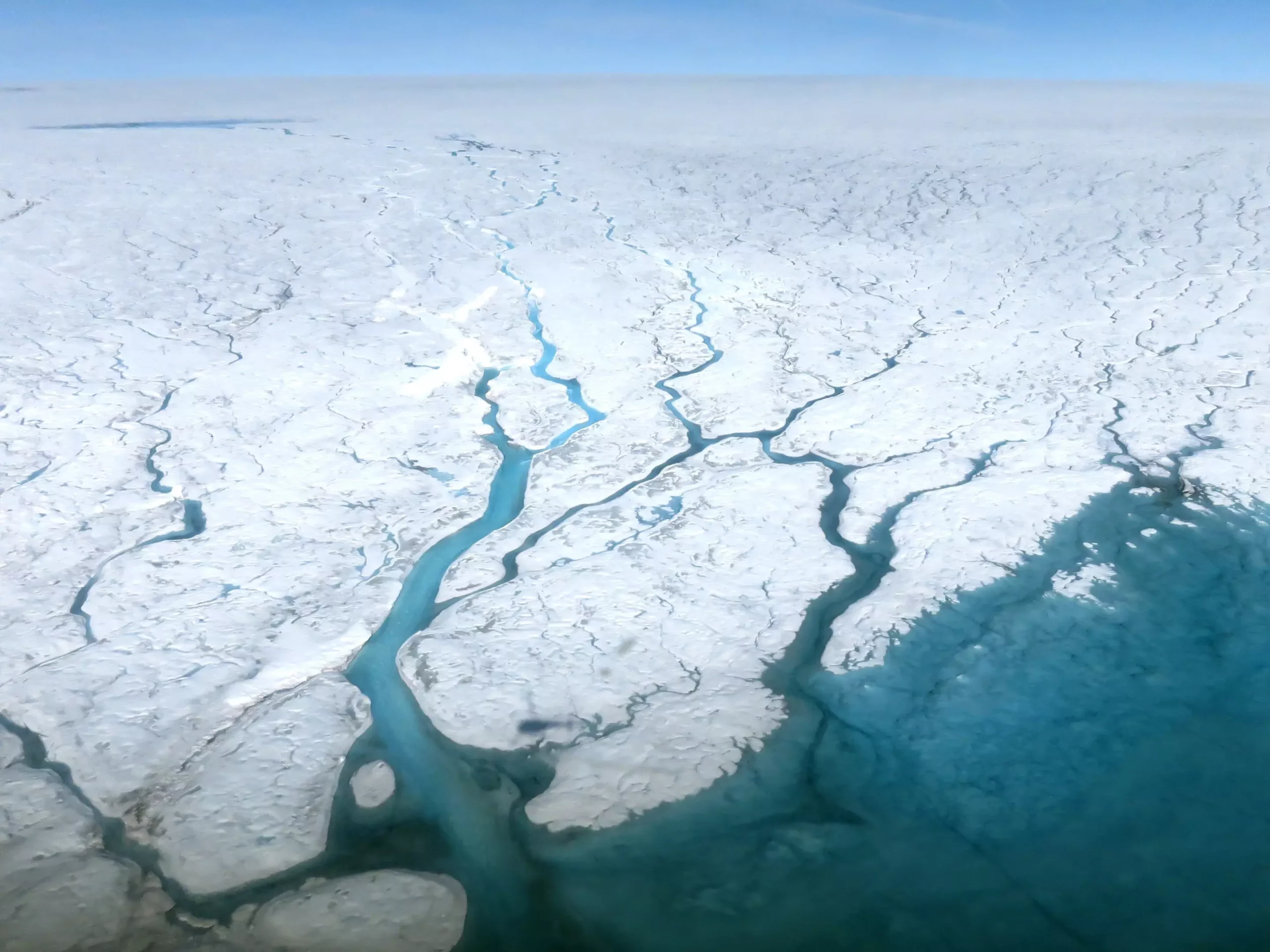As climate change progresses, one of the most pressing issues that scientists and policymakers face is the alarming rate at which sea levels are rising. This phenomenon, driven largely by the melting of polar ice sheets, has entered the global discourse, making it essential to accurately gauge the contributions from these colossal ice masses. Recent research conducted by a collaborative group involving The University of Texas at Austin, NASA’s Jet Propulsion Laboratory, and the Geological Survey of Denmark and Greenland signifies a breakthrough in understanding the intricate behaviors of ice sheet meltwater. This newfound understanding revolves around the formation of impermeable layers within the ice, a crucial aspect for improving predictions related to sea level rise.
At the center of this groundbreaking research is the firn—a layer of granular, old snow not yet fully compacted into solid ice—covering the world’s largest freshwater collections, namely the Greenland and Antarctica ice sheets. Firn’s porous nature has significant implications for water drainage: when snow melts, instead of running straight into the ocean, the meltwater can percolate down through these layers and refreeze, effectively reducing the outflow of meltwater by nearly half. However, the very same mechanisms might also lead to the formation of impermeable ice layers, which can block this drainage, funneling more meltwater directly into the seas. This dichotomy illustrates the complexity of ice sheet dynamics and helps explain the conflicting reports on the rate of sea level rise attributed to melting.
One of the pivotal discoveries made by the research team led by graduate student Mohammad Afzal Shadab revolves around the mechanism behind these ice layer formations. Previously, it was believed that the process of ice layer creation on firn primarily occurred through ponding of rainwater, which subsequently refreezes. Yet, the intricacies of the Greenland environment revealed that this model fails to account for observed phenomena. The melting during even extreme events was found insufficient to cause water accumulation that would freeze into these layers, leading to the need for a novel approach.
The research indicates that the interplay between warmer meltwater flowing through the porous firn and the colder ice above plays a crucial role in determining where new ice layers will form. The balance between this heat conduction and the downward flow of meltwater presents a fascinating competition that ultimately dictates the dynamic structuring of the firn. By micromanaging this competition, researchers can enhance their predictions about how much meltwater can be retained by these ice sheets.
To substantiate their theoretical framework, the researchers turned to a dataset obtained during a 2016 expedition in Greenland, where they meticulously studied the firn with a combination of thermometers and radar measurements. This careful and sophisticated approach allowed them to validate their hypothesis concerning the layering dynamics and enabled them to accurately model the meltwater movements in a way that previous hydrological simulations had failed to do. This empirical relationship between theory and observation has profound implications for future predictions about sea level fluctuations.
Moreover, the researchers unearthed another significant finding: the depth of ice layers within the firn may serve as a historical record of thermal conditions over time. The stratification pattern, whether it forms deeper in a warming climate or nearer to the surface in a cooler context, provides valuable insights into how these ice sheets respond to climate variability.
Currently, meltwater flowing into the oceans from Greenland is eclipsing that of Antarctica, emphasizing the urgency of understanding these dynamics. Estimates vary drastically, predicting contributions to sea level rises between 5 to 55 centimeters by the year 2100, largely owing to the complexities of ice layer formation and meltwater dynamics. The revelation of how ice layers operate introduces a new layer of understanding to these predictions, challenging existing models that fail to encapsulate the intricacy of physical processes at play.
In light of these revelations, the path forward calls for revisiting and refining existing forecasting models. Shifting paradigms in how researchers view the role of firn and the freezing dynamics involved could lead to more accurate and nuanced projections regarding sea level rise. The research underscores the convoluted nature of ice sheet interactions and highlights the pressing need for continued investigation into these polar environments—where profound changes are not only possible but are already underway.


Leave a Reply